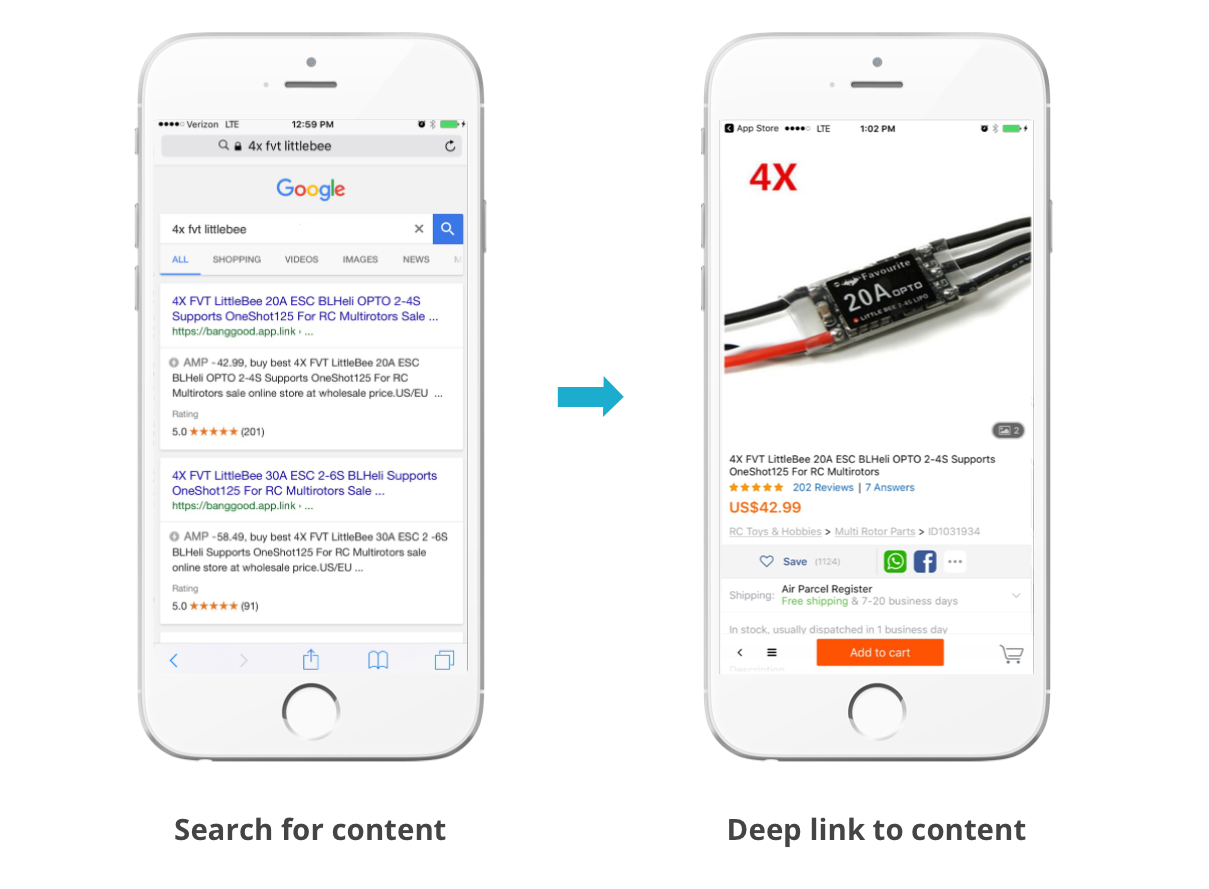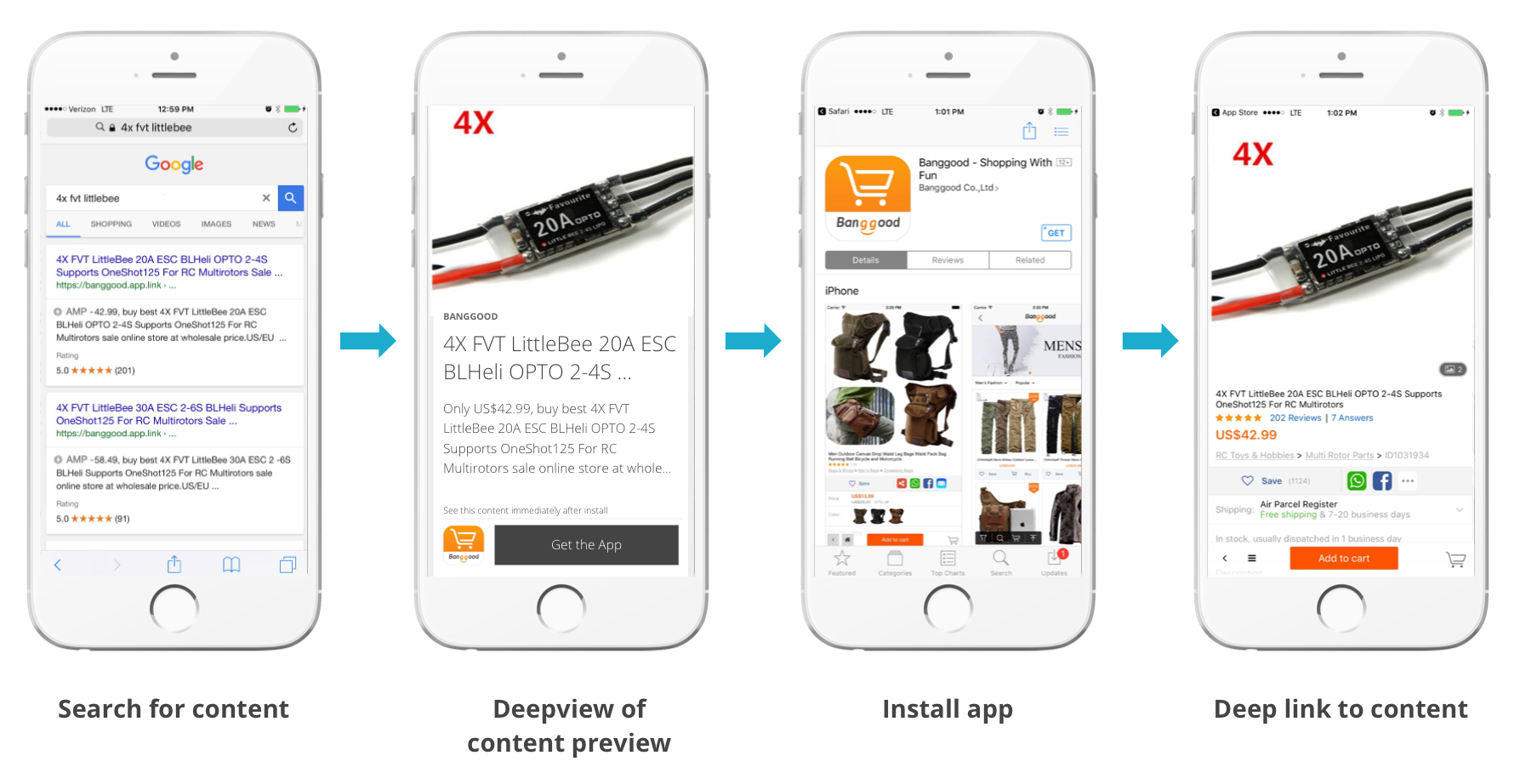Branch unveils AMP Deepviews, so content in uninstalled apps can be previewed from search results
The new solution shows app-based content in Google as fast-loading and preferred AMP pages, if the app has not been installed.
Let’s say you create a mobile app. And you get it accepted into Apple’s and Google’s app stores.
Now what?
There are zillions of apps added to the app stores every week, so your biggest problem is simply getting found. Maybe you could luck out and get featured by the App Store. Or maybe you invest a considerable budget in ads encouraging users to install your app — even though they don’t really know it.
Palo Alto, California-based Branch is out this week with a free solution that it believes could dramatically change these choices, by changing how app content is discovered via search engines if you don’t have the app installed.
Currently, Google can lead you to content in apps via app indexing, where deep links can be found in mobile search results and lead you to content in the app. If the app is installed. If not, it leads you to the app store, and then to that content once you’ve installed the app.
The new Branch solution, called AMP Deepviews, is designed to accomplish three things: present in-app content when the app is not installed, load quickly, and get the preferential mobile search treatment that Google gives to AMP pages.
AMP Deepviews is based on Branch’s earlier offering, just called Deepviews. Released in late 2015, it allowed an app creator to generate a deep link that could take the user from an email or regular mobile web page directly to specified content in the app. If the app wasn’t installed, it also led the user to the relevant app store for installation, after which the desired content was shown.
With AMP Deepviews, an app developer adds the SDK to the app and creates deep links for multiple points of content, such as many product screens in a shopping app. Then, an XML-based sitemap is generated of those deep links.
AMPing the app
The sitemap is hosted by Branch, where it is spidered by search engines like Google. They return AMP pages that are generated for indexing, with each page containing the content found in each deep link.
Suppose a user searched in mobile Google for an electronic part called the 4X FVT LittleBee (as shown below). The search results show various links, one of which is the deep link to that product in a shopping app called Banggood.
The user clicks on the Banggood deep link in the search results.
If you have the app installed, you’ll go right to the product page for that electronic part in that app, as shown:
If you don’t have the app installed, you’ll see an AMP page with that product info. Since it’s in AMP format, it loads quickly and is given priority in organic search results by Google. (In fact, Google will show AMP pages before its own Firebase App Indexing deeplinks.) The AMP page consists of non-interactive imagery and info that is, by default, built to lead to the app store so the Banggood app can be installed, and thence to the content in the app:
Branch CEO and cofounder Alex Austin told me that a developer could tweak the generated AMP page so it has more functionality, such as links to other content, as long as the modifications don’t break the restricted HTML boundaries of the AMP format.
Bing and other search engines can similarly display the AMP pages as a preview of content in an uninstalled app, but they don’t give AMP the kind of preferential treatment that Google does.
Austin described his company’s new solution as “incredibly exciting, because app developers can have their app content discovered as AMP pages,” when the app is not yet installed.
The AMP Deepviews SDK and Branch hosting of the sitemap and AMP pages is free, Austin said, adding that his company makes its living by providing deep linking services to large companies.
Marketing Land – Internet Marketing News, Strategies & Tips
(14)






